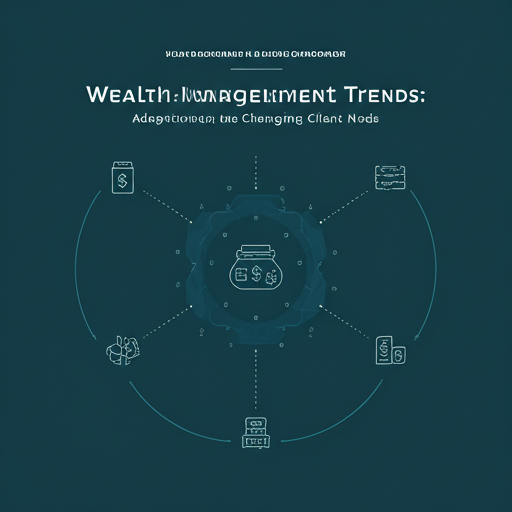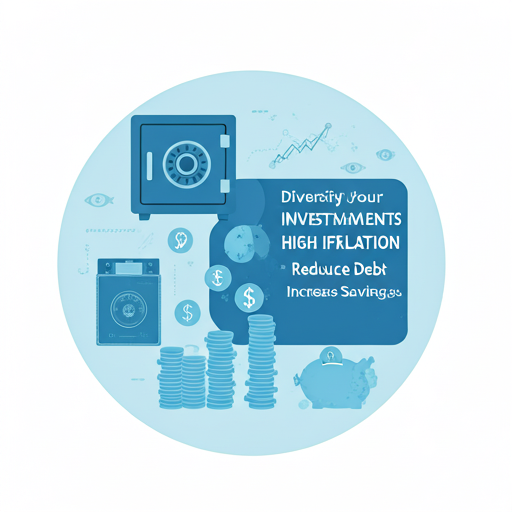Introduction to Wealth Management in the Cryptocurrency Era
The Evolution of Wealth Management
Wealth management has undergone significant transformation in recent years, particularly with the advent of cryptocurrency. Traditionally, wealth management focused on conventional assets such as stocks, bonds, and tangible estate. However, the rise of digital currencies has introduced new opportunities and challenges for financial advisors. This shift necessitates a deeper understanding of blockchain technology and its implications for asset management. Many professionals are now required to adapt their strategies to incorporate these innovative financial instruments.
Moreover, clients are increasingly seeking guidance on how to navigate this complex landscape. They want to understand the risks and rewards associated with cryptocurrency investments. This demand for knowledge has prompted wealth managers to enhance their educational resources. It is essential for advisors to stay informed about market trends and regulatory developments. Knowledge is power in this evolving field.
As a result, wealth management firms are investing in technology and training to better serve their clients. They recognize that a proactive approach is vital for maintaining client trust and satisfaction. The landscape is changing rapidly. Adapting to these changes is not just beneficial; it is necessary for success.
Impact of Cryptocurrency on Traditional Wealth Management
The emergence of cryptocurrency has significantly influenced traditional wealth management practices. Financial advisors are now tasked with integrating digital assets into their clients’ portfolios. This integration requires a comprehensive understanding of the unique characteristics of cryptocurtencies, such as volatility and liquidity. Many investors are drawn to the potential for high returns. However, they must also be aware of the associated risks.
Moreover, the regulatory landscape surrounding cryptocurrencies is continually evolving. Wealth managers must stay abreast of these changes to ensure compliance and protect their clients’ interests. This dynamic environment necessitates ongoing education and adaptation. Knowledge is crucial in this field.
Additionally, client expectations have shifted as a result of cryptocurrency’s popularity. Investors are increasingly seeking diversification through digital assets. They want tailored strategies that reflect their risk tolerance and investment goals. This demand has prompted wealth management firms to develop specialized services. It is essential to meet these new client needs.
As a result, traditional wealth management is being redefined. The integration of cryptocurrency is not merely an option; it is becoming a necessity. Adapting to this trend is vital for maintaining competitive advantage.
Importance of Adapting to Client Needs
In the rapidly evolving landscape of wealth management, adapting to client needs has become paramount. Financial advisors must recognize that clients today are more informed and discerning than ever before. They seek personalized strategies that align with their unique financial goals and risk appetites. Understanding these individual preferences is crucial for building lasting relationships. Trust is essential in this field.
Furthermore, the rise of digital assets has introduced new dimensions to client expectations. Investors are increasingly interested in incorporating cryptocurrencies into their portfolios. This shift necessitates a tailored approach that considers the volatility and regulatory complexities of these assets. Many clients desire transparency and education regarding their investments. Knowledge empowers clients.
Additionally, effective communication is vital in addressing client concerns and aspirations. Wealth managers must engage in active listening to fully comprehend their clients’ objectives. This engagement fosters a collaborative environment where clients feel valued. It is important to prioritize client feedback.
Ultimately, adapting to client needs is not just beneficial; it is essential for sustained success in wealth management. The ability to pivot and respond to changing demands will differentiate successful advisors in a competitive market. Flexibility is key in this dynamic environment.
Current Trends in Wealth Management
Rise of Digital Assets
The rise of digital assets has transformed the wealth management landscape. Financial advisors are increasingly incorporating cryptocurrencies and blockchain-based investments into their strategies. This trend reflects a growing client demand for diversification and innovative investment opportunities. Many investors are eager to explore new asset classes.
Key factors driving this trend include:
These elements contribute to a more favorable environment for digital investments. Additionally, the potential for high returns attracts a diverse range of investors. Many view digital assets as a hedge against inflation.
Moreover, the integration of digital assets requires wealth managers to enhance their technological capabilities. They must utilize advanced analytics and risk management tools to navigate this complex market. This adaptation is essential for informed decision-making. Knowledge is crucial in this evolving field.
As digital assets continue to gain traction, wealth management firms must remain agile. They need to develop tailored solutions that address the unique characteristics of these investments. Flexibility is vital for success in this dynamic environment.
Integration of Blockchain Technology
The integration of blockchain technology is reshaping wealth management practices. Financial advisors are increasingly leveraging blockchain for enhanced transparency and security in transactions. This technology allows for real-time tracking of assets, which can significantly reduce fraud risks. Many clients appreciate the added layer of security.
Furthermore, blockchain facilitates the tokenization of assets, enabling fractional ownership. This innovation opens investment opportunities to a broader audience. Investors can access high-value assets with lower capital requirements. It democratizes investment options.
Additionally, smart contracts streamline processes by automating transactions and compliance checks. This efficiency reduces operational costs and minimizes human error. Many firms are adopting these solutions to improve service delivery. Speed is essential in today’s market.
Moreover, the growing acceptance of blockchain by regulatory bodies enhances its credibility. As regulations evolve, wealth managers must stay informed to ensure compliance. Knowledge is power in this context. By embracing blockchain technology, wealth management firms can better meet client expectations and adapt to market changes. Flexibility is key for future success.
Focus on Sustainable and Ethical Investing
The focus on sustainable and ethical investing is increasingly shaping wealth management strategies. Investors are becoming more conscious of the social and environmental wallop of their portfolios. This shift is driven by a growing awareness of climate change and social justice issues. Many clients want their investments to reflect their values.
Moreover, the integration of Environmental, Social, and Governance (ESG) criteria into investment decisions is gaining traction. Wealth managers are now evaluating companies based on their sustainability practices and ethical governance. This approach not only aligns with client values but also mitigates long-term risks. Responsible investing is becoming essential.
Additionally, research indicates that companies with strong ESG practices often outperform their peers. This correlation suggests that sustainable investing can yield competitive returns. Many investors are recognizing the financial benefits of ethical practices. It’s a win-win situation.
Furthermore, regulatory bodies are increasingly emphasizing transparency in sustainable investing. Wealth managers must adapt to these wvolving standards to maintain compliance. Staying informed is crucial in this landscape. By prioritizing sustainable and ethical investing, wealth management firms can attract a new generation of investors. This trend is here to stay.
Client-Centric Approaches in Wealth Management
Understanding Client Profiles and Preferences
Understanding client profiles and preferences is essential in wealth management. Financial advisors must conduct thorough assessments to identify individual goals and risk tolerances. This personalized approach enables the development of tailored investment strategies. Clients appreciate customized solutions.
Moreover, utilizing data analytics can enhance the understanding of client behavior. By analyzing past investment patterns, advisors can predict future preferences. This insight allows for proactive adjustments to portfolios. Anticipation is key in this field.
Additionally, effective communication plays a crucial role in understanding client needs. Regular check-ins and feedback sessions foster a collaborative relationship. Clients feel valued when their opinions are considered. It builds trust over time.
Furthermore, segmenting clients based on demographics and investment objectives can streamline service delivery. Wealth managers can create targeted strategies that resonate with specific groups. This method increases client satisfaction. It’s a strategic advantage.
Ultimately, a client-centric approach not only enhances service quality but also drives long-term loyalty. By prioritizing client understanding, wealth managers can navigate the complexities of individual preferences effectively. Flexibility is vital for success.
Personalized Investment Strategies
Personalized investiture strategies are essential for effective wealth management. Advisors must assess individual client goals, risk tolerance, and time horizons. This tailored approach ensures that investment plans align with each client’s unique circumstances.
To create these strategies, advisors often cobsider several key factors:
By analyzing these elements, wealth managers can develop portfolios that reflect client preferences. This process fosters a sense of ownership among clients. They feel more engaged in their financial journey.
Moreover, regular reviews and adjustments are crucial for maintaining alignment with client needs. Market conditions and personal circumstances can change, necessitating strategy updates. Flexibility is vital in this dynamic environment.
Additionally, incorporating diverse asset classes can enhance portfolio resilience. This diversification helps mitigate risks while pursuing growth opportunities. It’s a prudent approach. By focusing on personalized investment strategies, wealth managers can build stronger relationships and drive client satisfaction.
Enhancing Client Communication and Education
Enhancing client communication and education is vital in wealth management. Financial advisors must prioritize clear and transparent dialogue with their clients. This approach fosters trust and ensures clients feel informed about their investments. Knowledge is empowering.
Moreover, utilizing various communication channels can improve engagement. Advisors can leverage emails, webinars, and in-person meetings to convey important information. Each method serves different client preferences. Flexibility is essential in communication.
Additionally, providing educational resources can help clients understand composite financial concepts. Workshops and informative articles can demystify investment strategies and market trends. Clients appreciate accessible information. It builds confidence in their financial decisions.
Furthermore, regular updates on portfolio performance and market conditions are crucial. This practice keeps clients informed and allows for timely adjustments. Proactive communication is key.
By focusing on enhancing communication and education, wealth managers can create a more client-centric experience. This strategy not only strengthens relationships but also promotes informed decision-making. Trust is the foundation of successful wealth management.
Future Outlook: Preparing for the Next Wave of Change
Emerging Technologies and Their Impact
Emerging technologies are reshaping the landscape of wealth management. Innovations such as artificial intelligence, machine learning, and blockchain are enhancing operational efficiency and client engagement. These technologies enable advisors to analyze vast amounts of data quickly. Speed is crucial in decision-making.
Furthermore, AI-driven analytics can provide personalized investment recommendations based on individual client profiles. This tailored approach improves client satisfaction and retention. It builds loyalty over time.
Additionally, blockchain technology offers increased transparency and security in transactions. This innovation reduces the risk of fraud and enhances trust between clients and advisors. Trust is essential in financial relationships.
Moreover, robo-advisors are gaining popularity, particularly among younger investors. These platforms provide automated investment management at lower costs. Accessibility is a significant advantage.
As these technologies continue to evolve, wealth managers must adapt their strategies accordingly. Staying informed about technological advancements is vital for maintaining a competitive edge. Knowledge is power in this rapidly changing environment. By embracing emerging technologies, wealth management firms can better serve their clients and prepare for future challenges. Flexibility is key for success.
Regulatory Changes and Compliance Challenges
Regulatory changes are a constant in the financial landscape, presenting compliance challenges for wealth management firms. As governments and regulatory bodies adapt to new market realities, advisors must stay informed about evolving regulations. This awareness is crucial for maintaining compliance. Knowledge is essential.
Key areas of focus include:
Each of these areas requires diligent attention to detail. Non-compliance can result in significant penalties and reputational damage. Firms must prioritize compliance training for their staff. It is a necessary investment.
Moreover, technology can aid in navigating these regulatory complexities. Compliance software can streamline reporting and monitoring processes, reducing the risk of human error. Automation enhances efficiency.
Additionally, proactive engagement with regulatory changes can position firms favorably in the market. By anticipating shifts, wealth managers can adapt their strategies accordingly. Flexibility is vital in this environment.
Ultimately, staying ahead of regulatory changes is essential for long-term success. Wealth management firms must cultivate a culture of compliance to thrive in this dynamic landscape. Trust is built through transparency and adherence to regulations.
Building Resilience in Wealth Management Practices
Building resilience in wealth management practices is essential for navigating market volatility and economic uncertainty. Financial advisors must develop strategies that can withstand unexpected challenges. Tmis proactive approach enhances long-term stability . Preparedness is key.
One effective method is diversifying investment portfolios across various asset classes. This strategy mitigates risks associated with market fluctuations. Clients benefit from reduced exposure to any single investment.
Additionally, implementing robust risk management frameworks is crucial. These frameworks should include regular assessments of market conditions and client portfolios. Continuous monitoring allows for timely adjustments. Awareness is vital in this field.
Moreover, fostering strong client relationships can enhance resilience. Open communication and transparency build trust, enabling clients to feel secure during turbulent times. Clients appreciate being informed. It strengthens loyalty.
Furthermore, investing in technology can improve operational efficiency and data analysis. Advanced tools can provide insights that inform strategic decisions. Technology is a valuable asset. By focusing on resilience, wealth management firms can better prepare for future challenges and maintain client confidence. Adaptability is essential for success.









